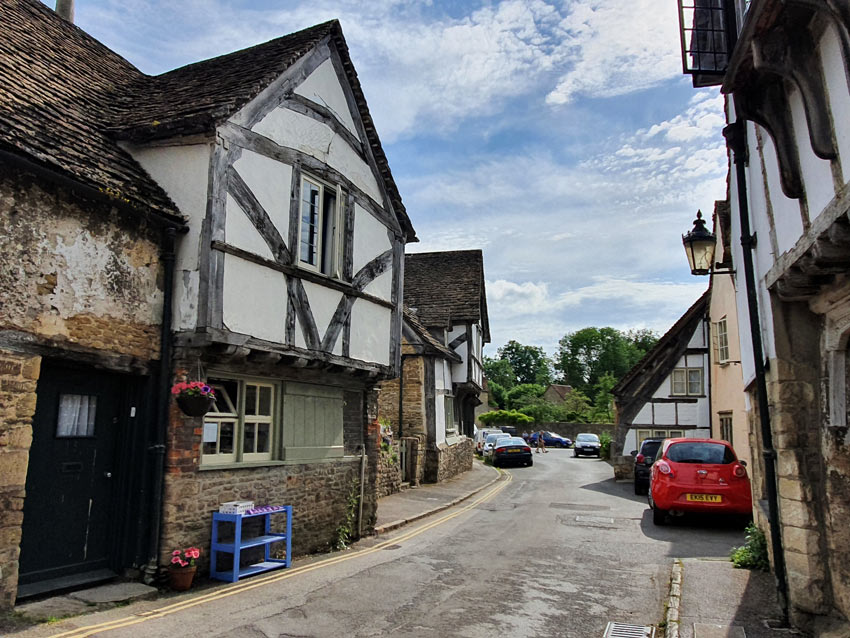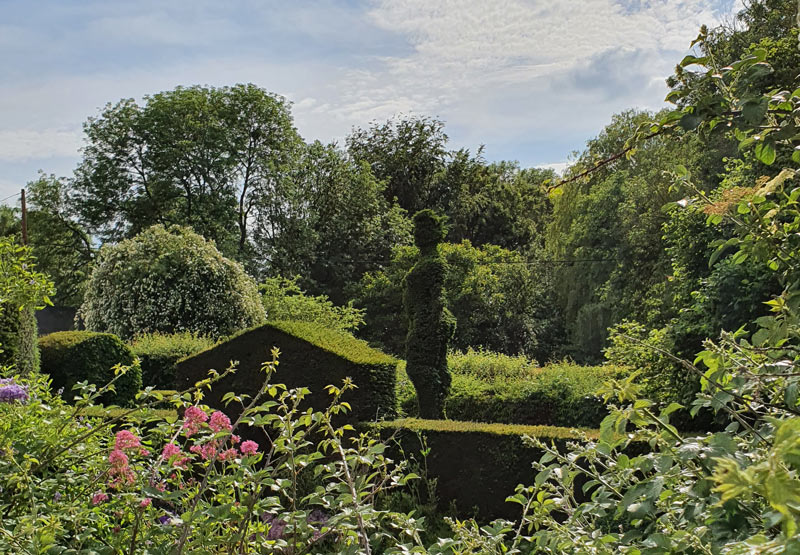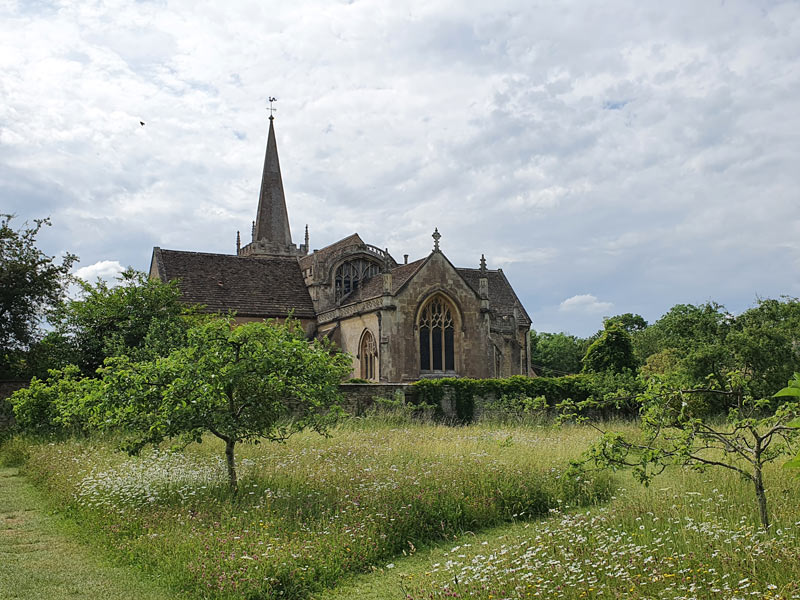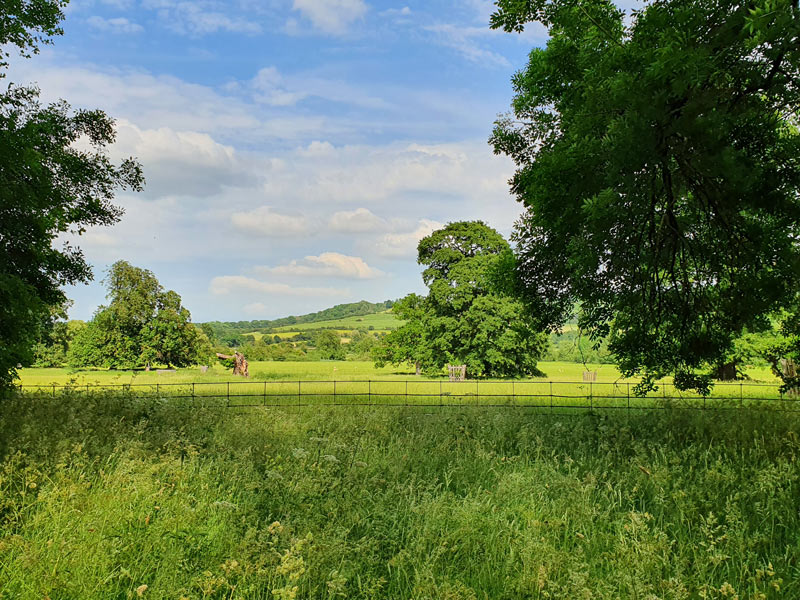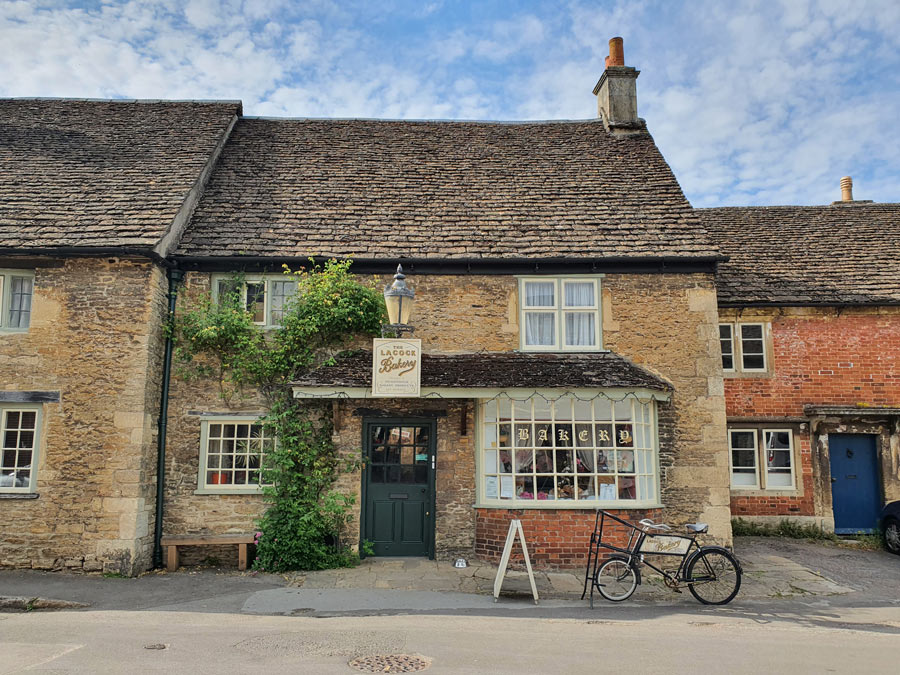
Lacock must be one of England’s most visited villages. This handful of picturesque streets lined with pretty cottages features regularly in films. Every day tourists arrive in cars and coaches to absorb the village’s quaint charm and Instagrammable views. This page contains Lacock tourist information, a description of things to do and see in the village, and suggestions for an overnight stay.
- Find a place to stay in Lacock – or discover the best places to stay, further down this page.
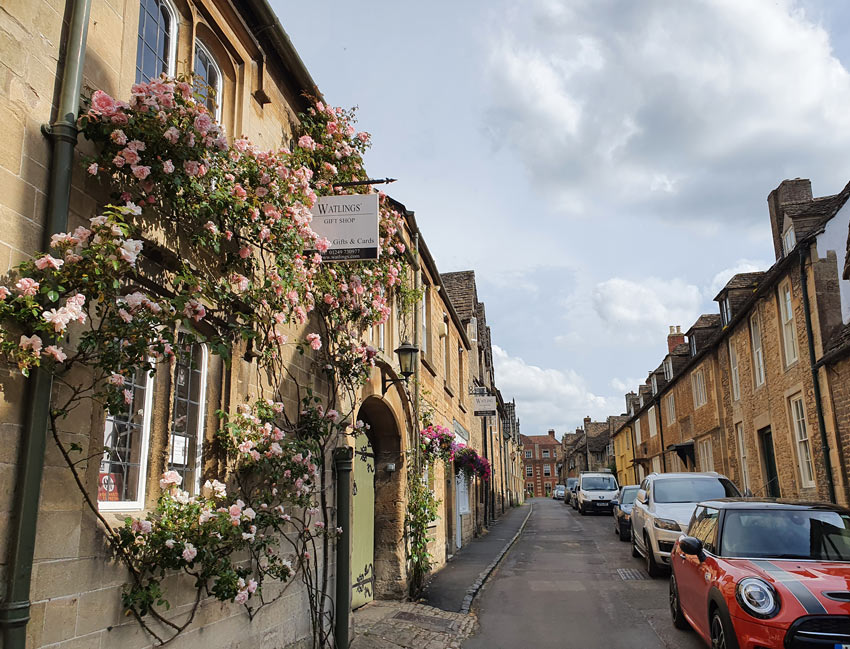
Lacock tourist information
Situated in Wiltshire, half an hour from Bath, Lacock is all that visitors expect a traditional English village to be. Overseas travellers, in particular, are bowled over by its charm.
The village is indeed very characteristic, with its rows of authentic historic dwellings and its unspoilt atmosphere. England has many other quaint villages, but Lacock stands out because it’s a lot more unspoilt than the norm. This is because almost the entire village belongs to the National Trust, and the conservation organisation have ensured that the village’s period details are preserved and its streets protected from the disfiguring changes of the modern world. As you walk around, the most obvious sign of modernity is cars.
Lacock has often been used as a filming location for films and TV series, and you’ve probably seen the village on a screen – especially if you enjoy costume dramas or Harry Potter. Fans of the BBC’s 1995 Pride and Prejudice still enjoy hunting out the settings for key scenes in the village.

Things to do in Lacock
There are two principal tourist activities in Lacock. The first is to visit Lacock Abbey (National Trust, admission fee) and the second is to wander around the village. Enjoying refreshments such as a traditional cream tea would probably come a close third for most visitors. There’s no urgency to sightseeing in Lacock and no long list of sights to tick off. It’s a place to enjoy a ramble around, admire and photograph the views, and absorb the historic charm of the village and its attractive surroundings.
Lacock Abbey
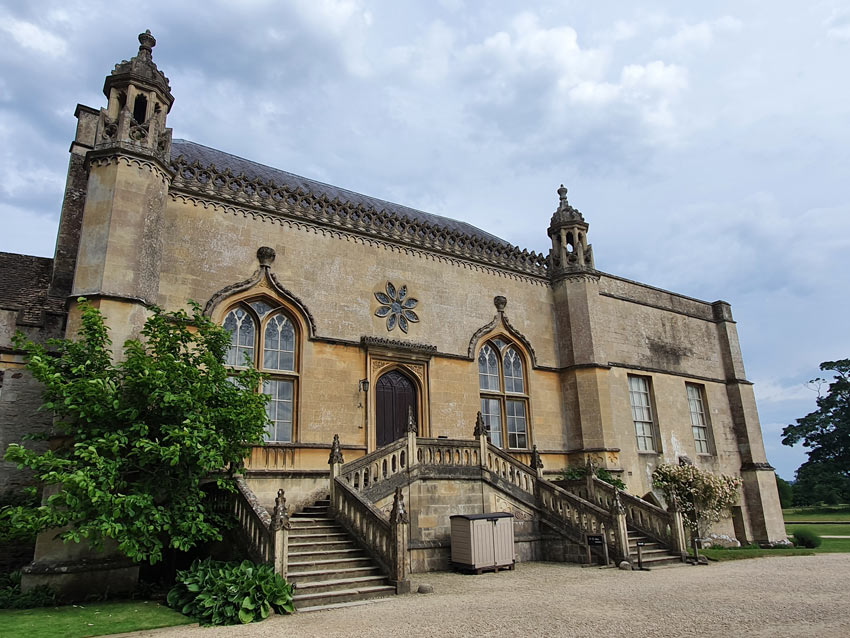
Lacock Abbey and Fox Talbot Museum (National Trust: Lacock Abbey and Fox Talbot Museum) consists of at least four separate attractions in one. Firstly, a country house with a long history, much-altered over the years. The stately home you visit today is part Renaissance Tudor, part 18th-century Gothic and still has interiors representative of the Victorian era, when William Henry Fox Talbot lived here.
Fox Talbot was a Victorian pioneer of photography. An image he took of a window here at the Abbey is the earliest photographic negative in existence. The museum here tells the story of photography and his work, as well as housing photography exhibitions.
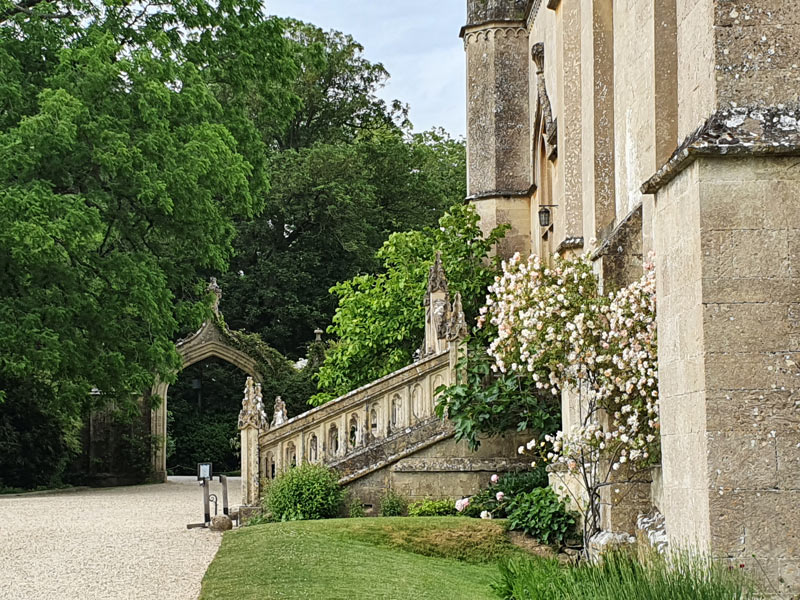
The third piece of the fascinating jigsaw that is Lacock Abbey is indicated in its name. Before the Dissolution of the Monasteries, when the estate became private property and the building became a Tudor home, there was an abbey and nunnery here, founded in the 13th century. The medieval cloister still survives, incorporated into the later house, along with several imposing vaulted rooms.
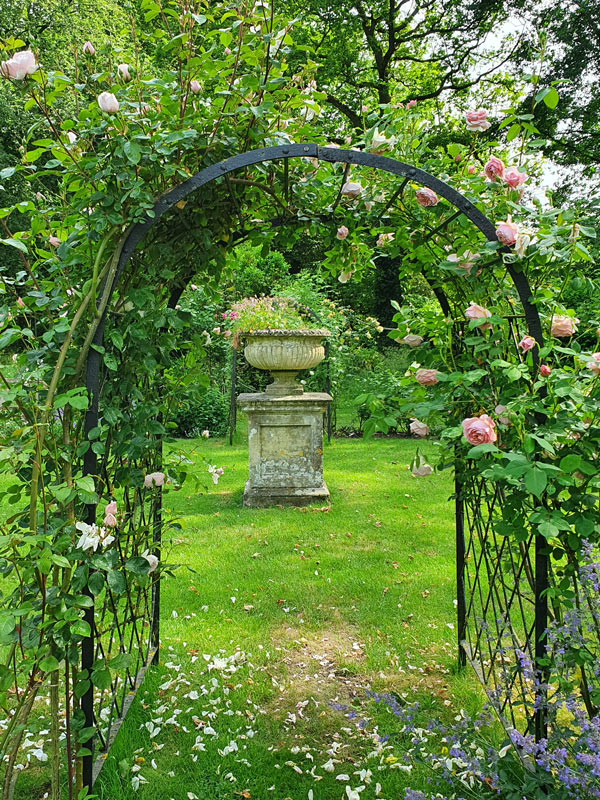
And finally, Lacock Abbey also has attractive gardens and parkland. The areas of cultivated garden aren’t extensive but include herbaceous borders, a wildflower meadow, a pretty rose garden and a woodland path.
Around the village
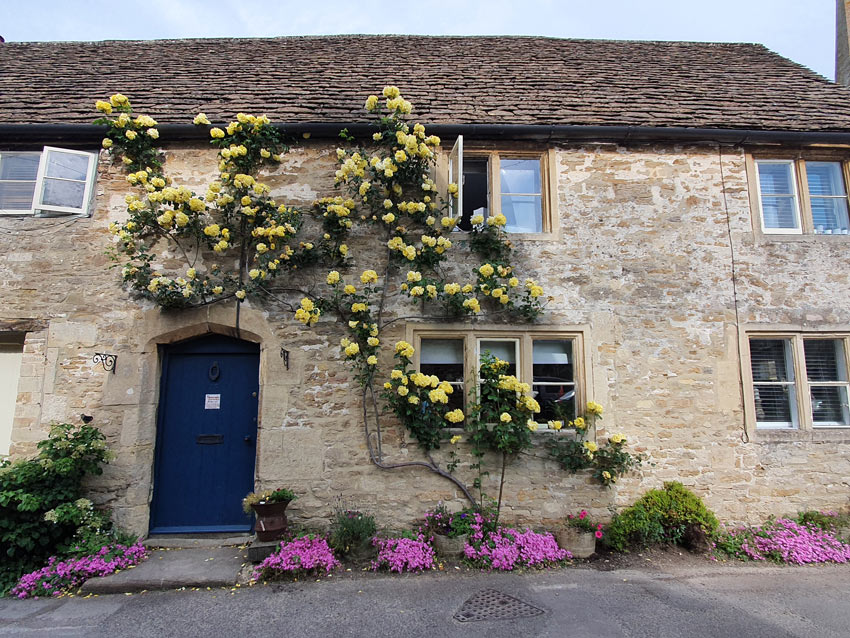
As it’s understandably popular with overseas tourists, including coach tours, Lacock can get busy. However, while it sometimes brings crowds, tourism also brings business for the local shops and tearooms. Consequently Lacock has the kind of commercial life now that most villages would have had in the past. The main difference is that the shops behind the historic shopfronts now are mostly gift shops and the cafés are aimed at tourists. Here you can still stroll, window shop and browse, before finding traditional gifts, souvenirs or food to take home. Some villagers have set up literal cottage industries, selling foodstuffs, keepsakes and crafts outside their homes.
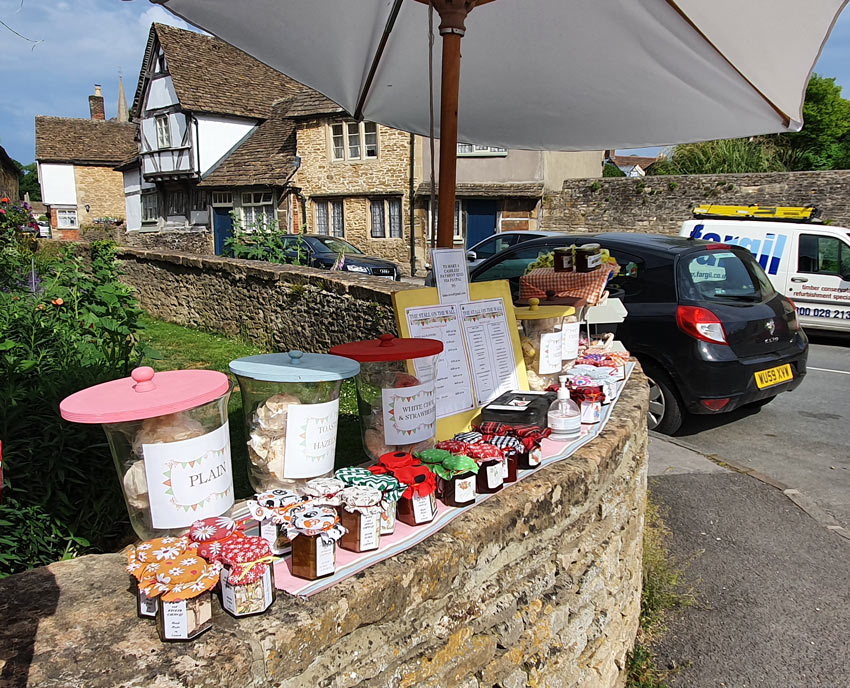
The streets of the village are enjoyable to explore, taking in the old-world charm and browsing little stores. Cottages and terraces are mostly built of warm-coloured local stone, but there are also picturesque historic black and white houses and the occasional use of russet brick, as in the Red Lion. The mixture of building styles and materials adds to the overall charm of Lacock, with its quirky, informal and authentic feel.
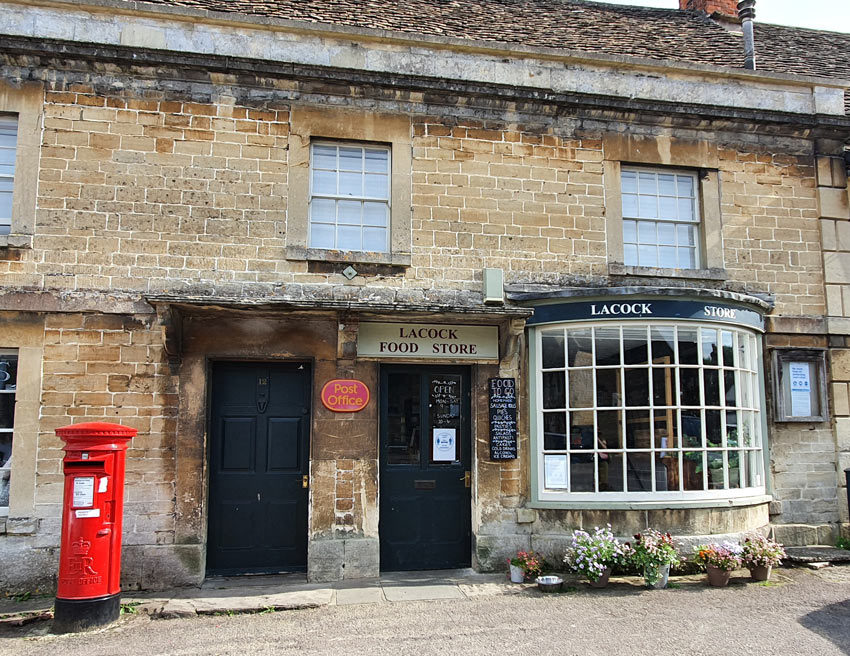
The National Trust webpages for Lacock include directions for several short walks around the village and its environs. Particular sights to visit include St Cyriac’s church and the 14th-century, Grade 1-listed Tithe Barn.
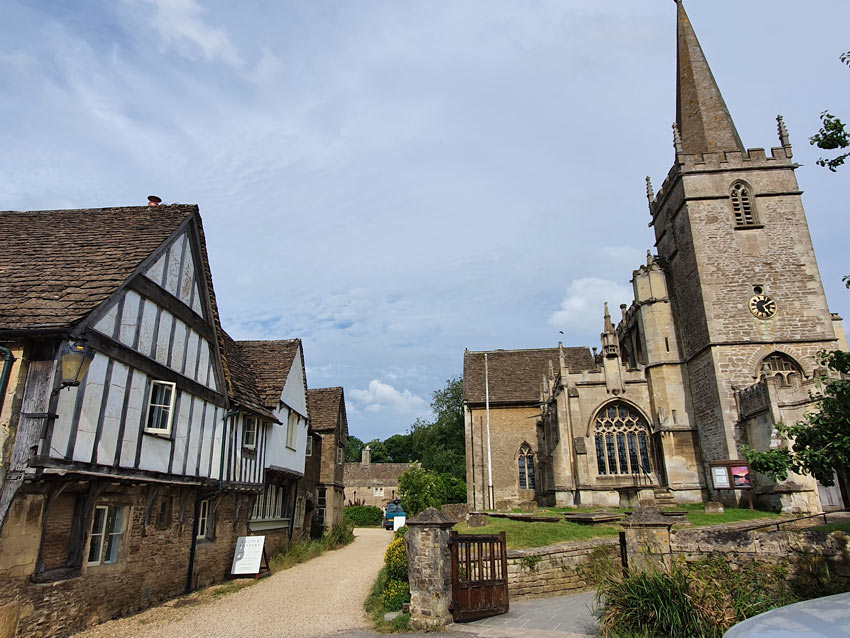
What was filmed at Lacock?
Lacock’s unspoilt appearance and its charm have made it a popular filming location for movies and TV. In two Harry Potter films, the medieval cloister and halls of Lacock Abbey were a filming location for Hogwarts scenes. The Abbey also featured in Fantastic Beasts: Crimes of Grindelwald.
Jane Austen lovers will recognise the village streets from the much-loved BBC Pride and Prejudice series (1995), when it was used as Meryton, the Bennet family’s local village, the tarmac road surface covered with dirt and grass. The brick Red Lion Inn hosted the Meryton Assembly, and the cloister at Lacock Abbey stood in for Cambridge in flashback scenes of Mr Darcy’s university days.
Lacock village has also appeared in Downton Abbey. Other productions filmed here include Wolf Hall, Cranford, The Other Boleyn Girl, The White Princess, and His Dark Materials (BBC).
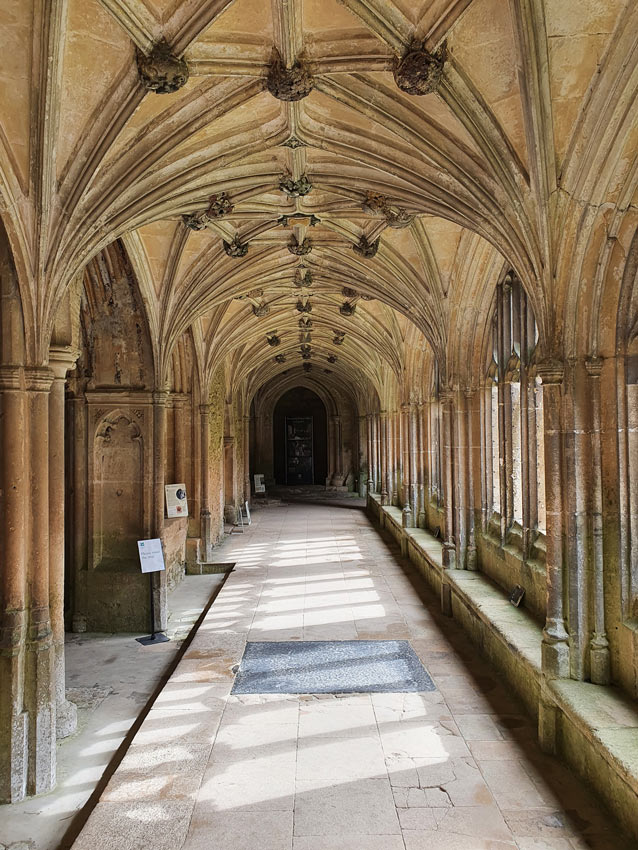
Stay in Lacock
Lacock would be a good place to stay for a night during a tour of the West Country or the Cotswolds. It would also make a charming and atmospheric base for a longer stay, with the chance to stroll the streets and enjoy restaurants after the day-trippers have gone.
If you have a car and are interested in sights in the area including Bath, but fancy the idea of returning to a quiet and quaint village location at the end of the day, a full-length holiday here is worth considering. With a week’s accommodation in Lacock or the countryside nearby, you could visit Bath, Castle Combe, the Cotswolds, Bradford on Avon, Avebury, Stonehenge and perhaps also explore the local footpaths.
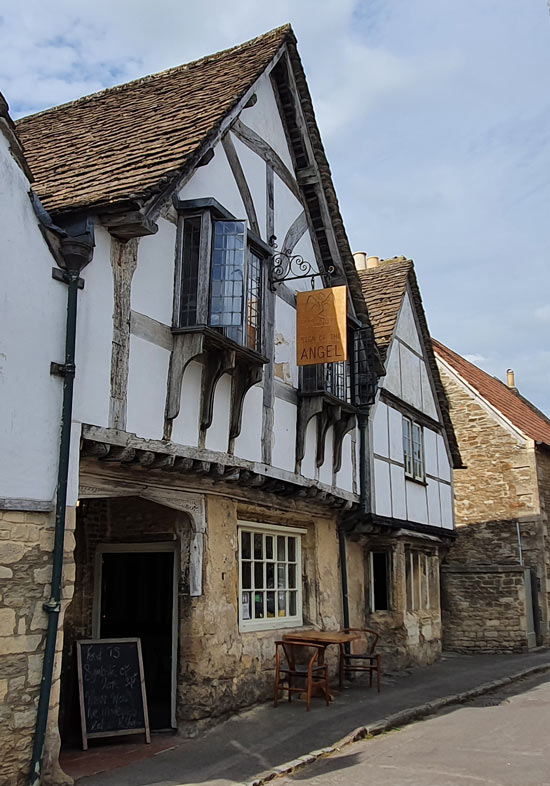
Best places to stay
- The Red Lion – Mr Darcy and the Bennets came here for the Meryton Assembly, and you can stay the night at this inn right at the heart of the village.
- Talbot House – a welcoming, budget-friendly and popular B&B on the edge of the village.
- Sign of the Angel – a 15th-century coaching inn, now a restaurant with rooms and an atmospheric and quirky place to stay.
- The George Inn – another traditional pub, with modern bedrooms and in an excellent location.
- The Nest at Bramble Cottage – cosy 1-bedroom holiday home a short distance from Lacock
- The Rectory Lacock – a pair of 2-bedroom holiday cottages on the edge of the village and a short easy walk from its attractions.
- Find accommodation in Lacock and around
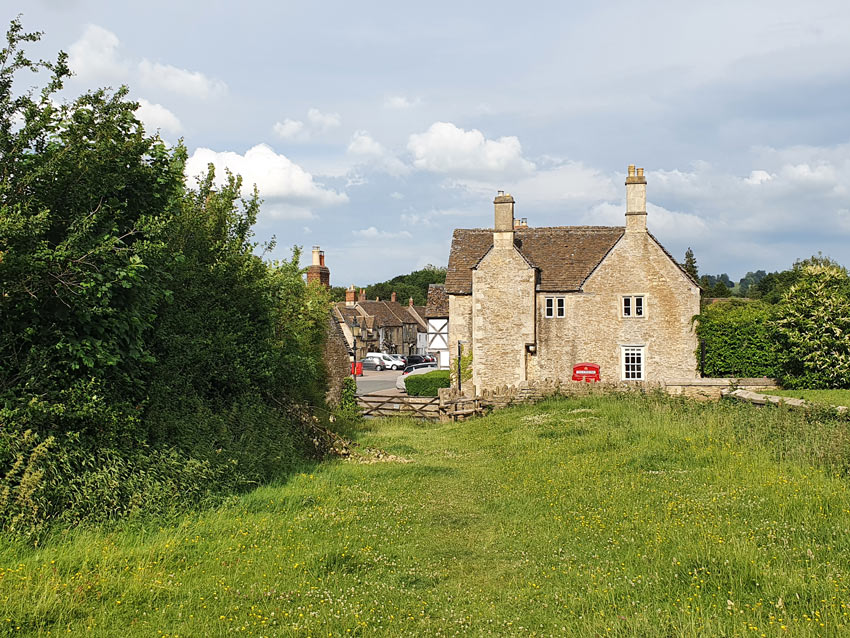
Get to Lacock
Lacock is near Chippenham, in Wiltshire, about half-an-hour’s drive from Bath. There’s a National Trust car park just outside the village (pay and display; NT members free).
Car-free travel
The village can be reached by public transport. The X34 bus (Faresaver) from Chippenham bus station to Frome stops by the George Inn. The bus journey from Chippenham takes around 15 minutes, and at the time of writing, services are approximately half-hourly. Chippenham itself is on the main railway line between Bath and London, around ten minutes from Bath by train.
